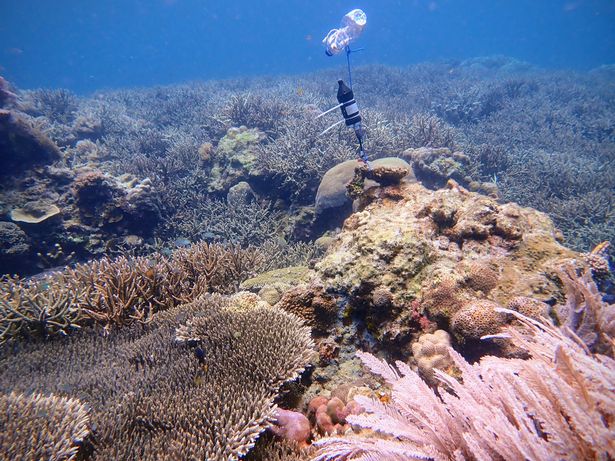
A noisy coral reef is a happy and healthy reef. Scientists evaluating a coral restoration project in Sulawesi have discovered that a reef is on the road to recovery when they could hear a cacophony of grunts, whoops, raspberries and other strange sounds.
The project was working to bring reefs back after they had been destroyed by extensive blast fishing in the Spermonde archipelago area of southern Sulawesi in Indonesia. A team from Exeter and Bristol universities was monitoring the use of metal frames placed on the dead reefs to see if, as they encouraged new coral growth, they helped restore the entire ecosystem.
Visual surveys were inconclusive so the team turned to hydroponics and were stunned by the results which have just been published in a paper in the Journal of Applied Ecology
Tim Lamont, at the University of Exeter, UK, and the lead author of the study, said: ‘Restoration projects can be successful at growing coral, but that’s only part of the ecosystem. This study provides exciting evidence that restoration works for other reef creatures.’
He said previous use of hydroponics had been miserable as they had only heard reefs go silent as they degraded. He added: ‘But this restoration site was exciting and inspiring because the change was going in the other direction.
‘As we listened through these hours and hours of recordings, we kept discovering sounds we had never heard. Some were a bit familiar but some were just like, “I have no idea what that is”. It was a real sense of adventure and discovery.
‘A foghorn one really blew our minds. I got really enthusiastic about trying to work out exactly what fish was making it. So I downloaded the noise onto an MP3 player, and got an underwater speaker, the type synchronised swimmers use.
‘I was swimming around blasting it out, trying to get a call and response going. I thought I got it replying a few times, but I never saw the fish itself swim out to meet the call. So the mystery continues.’
Lamont suspects it may be a type of toadfish, based on other recordings from the Caribbean.
Working with the local community the MARS Coral Reef Restoration project had laid hexagonal metal frames called ‘Reef Stars’, seeded with coral, over an extensive area. The frames stabilised loose rubble and kickstarted rapid coral growth, leading to the revival of the wider ecosystem.


